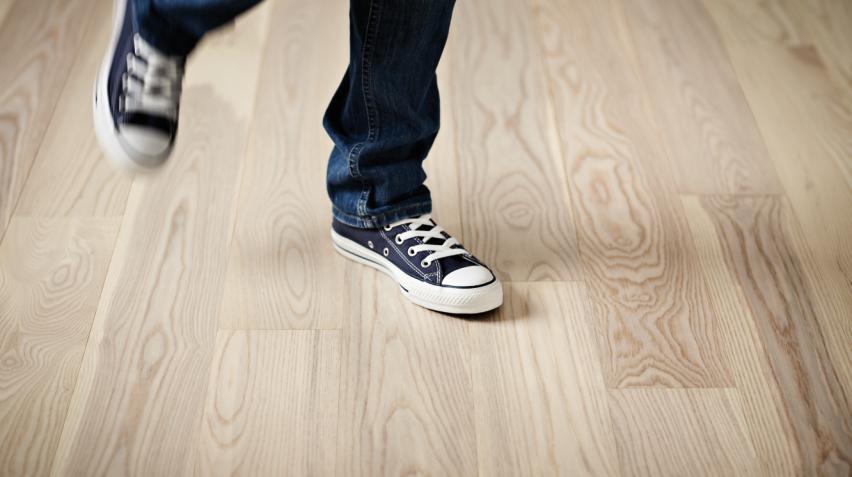Top Liquid Moisture Barriers for Wood, Vinyl, and Laminate Floors
When installing wood, vinyl, or laminate floors, controlling moisture is critical to prevent common issues like warping, mold, and reduced floor lifespan. This guide outlines the most effective liquid moisture barriers available, explaining how they work, where they’re best used, and what to consider for different subfloors and environments. Whether you’re a professional installer looking for proven solutions or a homeowner aiming to safeguard your investment, you’ll find clear, practical information to help you choose and apply the right moisture protection for long-lasting, trouble-free floors.
Why Moisture Protection Matters for Flooring
Moisture is one of the most common threats to the long-term performance and appearance of wood, vinyl, and laminate floors. Without adequate moisture protection, floors can suffer from swelling, warping, and even mold growth. These issues not only compromise the structure and look of your floor but can also lead to costly repairs down the line. Applying the right liquid moisture barrier for flooring is essential—especially in rooms with concrete subfloors, basements, kitchens, or other areas prone to humidity. Taking this step up front helps ensure your investment in quality flooring, such as solid hardwood plank flooring, remains protected and beautiful for years to come.
Understanding Liquid Moisture Barrier for Flooring
A liquid moisture barrier for flooring is a specialized product applied directly to subfloors—most often concrete—before installing your new floor covering. Unlike sheet-based barriers or underlayment, these liquid-applied barriers form a seamless, impenetrable layer that blocks water vapor from migrating upward. They are typically made from epoxy or urethane and cure to create a strong, uniform membrane. For technical product details and guidance on solutions for glued installations, review the liquid moisture barrier, for glued hardwood floors H 6.5. This solution is ideal for areas where moisture intrusion is a concern, providing robust protection for all types of flooring, including wood, vinyl, and laminate. By preventing moisture-related problems at the source, liquid barriers contribute to a healthier indoor environment and a longer-lasting floor.
Key Benefits of Using Liquid Moisture Barriers
Choosing a liquid moisture barrier for flooring provides a range of practical benefits, including:
- Prevention of mold and mildew, which thrive in damp conditions
- Reduced risk of floor warping, cupping, or rot—especially important for real wood floors
- Extended lifespan for wood, vinyl, and laminate surfaces
- Support for a healthy indoor climate by controlling moisture ingress
- Compatibility with underfloor heating systems, ensuring even warmth without compromising protection
- Suitability for both new construction and renovation projects
These advantages make liquid-applied moisture barriers a smart addition to any high-quality flooring installation.
Comparing Types of Moisture Barriers for Flooring
Selecting the right moisture barrier is crucial for long-term success. Here’s how the main options compare:
Liquid-Applied Moisture Barriers
- Create a seamless, highly protective layer
- Ideal for concrete or high-moisture environments
- Typically offer low VOC options
- Require proper surface preparation and application technique
Polyethylene Sheet Barriers
- Cost-effective and commonly used
- Simple to install but require careful taping of seams
- More suitable for floating floors or lower-moisture conditions
Underlayments with Integrated Moisture Protection
- Combine cushioning with moderate moisture resistance
- Best for use beneath laminate and vinyl plank flooring
- Provide sound reduction and added comfort
For homeowners and installers, weighing these options helps match the right solution to the project’s needs. For premium solid wood floors, a liquid moisture barrier for flooring is often the best choice, particularly over concrete.
How to Choose the Right Liquid Moisture Barrier for Your Floor
Making an informed choice is straightforward when you consider:
- Subfloor type: Concrete typically requires a robust liquid moisture barrier; wood subfloors may need less intensive protection.
- Room location: Basements and ground-floor rooms are more susceptible to moisture than upper levels.
- Expected moisture levels: Areas prone to dampness demand higher protection.
- Type of flooring: Solid wood, vinyl, and laminate all benefit from moisture barriers, but the level of necessity may vary.
- Sustainability needs: Opt for low-emission, certified products to maintain a healthy indoor environment.
When in doubt, consult with a flooring professional or explore Junckers’ certified timber – PEFC™ and FSC® for sustainable product choices. Matching the barrier to your project helps ensure a smooth installation and lasting results.
Step-by-Step Application of a Liquid Moisture Barrier for Flooring
Proper application is essential for performance. Here’s a typical process:
- Prepare and clean the subfloor: Remove dust, debris, and any existing coatings for proper adhesion.
- Test the subfloor for moisture: Use a moisture meter to determine if additional drying is needed before application.
- Apply the barrier: Use a roller or brush to spread the liquid evenly across the subfloor, working in sections for uniform coverage.
- Observe drying and curing times: Allow the barrier to cure fully according to the manufacturer’s instructions before installing your floor.
- Inspect the surface: Ensure a continuous, pinhole-free coating before proceeding with installation.
For visual guidance on correct application techniques, see Junckers’ installation videos. For complex projects or challenging environments, professional installers can ensure the highest level of protection and compliance with industry standards.
Get Expert Advice and High-Quality Flooring Solutions from Junckers
Whether you’re upgrading a private home or working on a larger project, choosing the right moisture protection is key to unlocking the full potential of your new floor. Junckers offers a wide range of solid hardwood flooring solutions and technical support to help you get the best results from your installation. Discover more about certified timber – PEFC and FSC® or reach out to the Junckers team for personalized advice on floor preparation, moisture barriers, and long-term maintenance. The right start ensures your floor’s beauty and durability for years to come.
Frequently Asked Questions About Liquid Moisture Barriers
Can I use a liquid moisture barrier for flooring under any type of hardwood floor? add
Yes, most modern liquid barriers are compatible with solid hardwood, engineered wood, vinyl, and laminate. Always check product specifications for compatibility with your floor type.
How long does the barrier take to cure? add
Curing times vary but typically range from several hours to a full day, depending on product and site conditions.
Is it safe for indoor air quality? add
Many liquid moisture barriers are available in low-VOC or zero-VOC formulations, supporting a healthy indoor environment, which is especially important for homes with Junckers floors.
What maintenance is needed after installation? add
Once applied and covered by flooring, no ongoing maintenance is required for the barrier itself.



